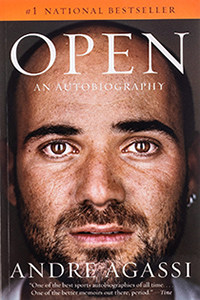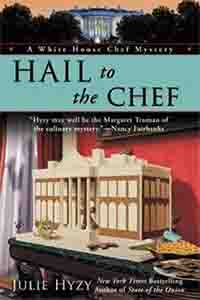“Agassi may have just penned one of the best sports autobiographies of all time. Check–it’s one of the better memoirs out there, period. . . . An unvarnished, at times inspiring story [told] in an arresting, muscular style. . . . Agassi’s memoir is just as entrancing as his tennis game.”
NO MAJOR SPOILERS
“Open” is one of the most passionately written anti-sports books ever. It adds depth and complexity to Agassi’s reputation as both a champion and a rebel. “Open” is an unusual sports memoir in many ways. Written by a superstar athlete, the theme of the book is, in fact, Agassi’s overwhelming disdain for tennis. It avoids the clichés about the love of the game that is typically expected off professional athletes.

According to Agassi, the game he excelled in was a prison, which he spent 30 years trying to escape. His first “prison” was his own backyard, where a court was built by his immigrant father, Mike, behind their house in Las Vegas. Mike Agassi was determined to groom a champion and subjected all four of his children to abusive training, to the extent that he would take them out of school for extra practice time. The eldest three crumbled under the pressure. The jackpot came with Andre who was blessed with brilliant hand-eye coordination.
His next “prison” was the Nick Bollettieri tennis academy in Florida. Described as a “glorified prison camp,” this academy was operated by Nick, an entrepreneur, paid in thousands of dollars by parents who deported their children off for months, even years, of incessant drilling, lectures on motivational psychology and nights spent in barracks-like dorms.
Agassi rebelled by drinking, getting into brawls, body piercing and sporting “one pinky nail that’s two inches long and painted fire-engine red.”
Locked into a career dictated by talent and upbringing, he found escape and solace off-court in the company of two men who were like a father figure to him — his physical trainer, Gil Reyes, and his coach, Brad Gilbert. Together they reconstructed Agassi’s body and his game, and made possible his extraordinary, late-career resurgence, when he could finally displace his archrival, Pete Sampras, from the numero uno spot.
He also talks openly about both his marriages. His first, to Brooke Shields, lasted just two years – the classic bad pairing of a jock and a starlet. Apart from having been pushed onto the stage as children, the glamorous couple had nothing in common. Shields disliked tennis and Agassi’s friends. Agassi wanted quiet time and never fit into her showbiz crowd.
Soon after his divorce in 1999, Agassi started seeing Steffi Graf, another former tennis prodigy, whom he eventually married and has two children with: Jaden and Jaz.
As part of his philanthropic gesture, Agassi set up an education complex, known as the Agassi Prep that gave underprivileged children, the one advantage he himself had been denied – education.
“Open” highlights the loneliness of professional tennis players. Tennis is a sport in which you talk to yourself. “No athletes talk to themselves like tennis players. In the heat of a match, tennis players look like lunatics in a public square, ranting and swearing and conducting debates with their alter ego. Of all the games men and women play, tennis is the closest to solitary confinement which inevitably leads to self-talk”.
Agassi describes his tennis life as a wrenching, thrilling, horrible, astonishing whirl; which he has spent 3 decades fighting. Trying to be perfect, he always fell short and it messed with his head. His confidence was shot and perfectionism was the reason. He tried to hit a winner on every ball, when just being steady and consistent would be enough to win 90% of the times.
Yet, tennis uses the language of life – advantage, service, fault, break, love – the basic elements of tennis are those of everyday existence, because every match is a life in miniature.
Agassi makes us marvel at how unexciting it is to be famous, how mundane famous people are. They’re confused, uncertain, insecure and often hate what they do. It’s something we always hear – like the old adage that money cannot buy happiness – but we never believe it until we see it for ourselves. How can one be unhappy when you have money in the bank and your own plane?
But he felt it – he felt listless, hopeless and trapped in a life he didn’t choose.
What struck me the most, was his grit, despite despising the game so much, and his own deteriorating health. As he sadly said, he didn’t know anything else to do. What was his USP, and had amassed a huge fan following, his various hairstyles – little did we know he was struggling with balding issues.
In short, life is a tennis match between polar opposites.
Winning and losing, love and hate, open and closed.
A first-rate sports memoir, darkly funny yet also anguished and soulful.
Stark, juicy, energizing, tragic, and compulsively readable, though a tad bit repetitive at times – you will devour it, if you love tennis and Agassi, because he has laid himself bare.
Reviewed by:
Ranjini Sen
Added 23rd August 2021




